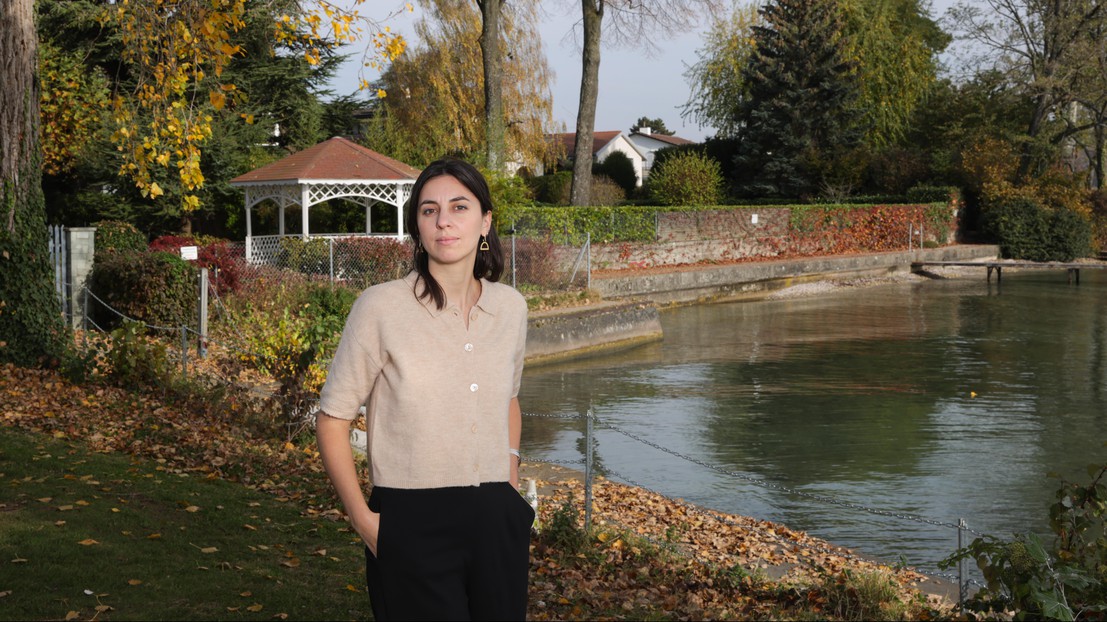How long will the dream of the seaside holiday villa last?

Michela Bonomo highlights that we need to anticipate the rising sea levels predicted by 2100. © 2024 EPFL/Alain Herzog - CC-BY-SA 4.0
Michela Bonomo examines in this column the ideology of the luxury seaside villa and shows its limits. Her column was published in three daily newspapers in French-speaking Switzerland.
The concept of a seaside villa retreat is ancient, dating back to the Roman Empire, yet the idea of a summer Mediterranean vacation is a recent one. In an essay, Swiss architect Philippe Rahm explored the origins of the summer vacation by looking at it through the lens of science and medicine. As 19th-century scientists made major discoveries about the health benefits of the sea and sun and their role in combating chronic illness, intellectuals increasingly encouraged seaside escapes from the cold – especially among the upper classes of northern Europe.[1]

The birth of an ideology
Escapes to the southern Mediterranean coastline, including the Italian Riviera, became particularly popular after the end of the Second World War. This trend, combined with Italy’s first industrial revolution, growing social mobility and projected sense of well-being, brought back the dream and ideology of the seaside villa.[2] Some of the most experimental and technologically advanced villas were built during this period along Italy’s mostly coastal landscape, often becoming standout works in architects’ portfolios and an opportunity for them to pull out all the stops.
My PhD thesis at EPFL examines the material and ideological proliferation of seaside holiday villas in postwar Italy, with a focus on six structures built by prominent architects between 1958 and 1973. Owing to the luxury status of holiday villas, my assessment is inscribed within the current framework of the history and theory of architecture.
This issue should be a primary concern for researchers, historians and policymakers.
An environmental concern
With coastal areas under dire threat from global warming, studying the history of luxury travel and holiday villas is both crucial and urgent. My thesis encourages us to rethink the speculative building practices that are affecting the seashore – practices that continue relentlessly to this day, and not only in the Mediterranean basin. With over 40 coastal areas at risk of disappearing in Italy already by the end of this century, this issue should be a primary concern for researchers, historians and policymakers.[3]
One way to shed light on this issue is to employ these villas – often occupied for just weeks in a year – as time capsules for research by opening them up to artists, historians and scholars. The work done by these experts could help document tacit knowledge about the history of these buildings and reveal hidden stakeholders. And the results could be used to call on policymakers to protect natural areas from overdevelopment, recognizing the seashore as a public good for everyone.

Michela Bonomo, PhD student at the Laboratory of Theory and Project of Domestic Space (TPOD), EPFL
[1] Rahm, Philippe. Natural History of Architecture: How Climate, Epidemics and Energy Have Shaped the City and Buildings. Paris: Editions du Pavillon de l’Arsenal, 2020.
[2] Ginsborg, Paul. A History of Contemporary Italy: Society and Politics, 1943–1988. New York, NY: St. Martin’s Griffin, 2003.
[3] Gainsforth, Sarah. “Cosa resta delle spiagge italiane,” Internazionale, 30 August 2023.
- This article was published in March 2025 in three local dailies – La Côte (Vaud Canton), Le Nouvelliste (Valais Canton) and Arcinfo (Neuchâtel Canton) – under a joint initiative between EPFL and ESH Médias to showcase the R&D being carried out at EPFL on advanced construction techniques.
Michela Bonomo, “Guilty Pleasures: The Project of Seaside ‘Villamania’ in Postwar Italy (1958-1973)”, co-supervised by Pier Vittorio Aureli and Christophe Van Gerrewey, EPFL, 2025.